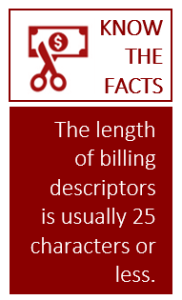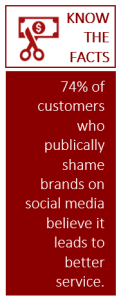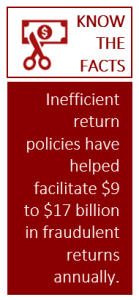
The Mysterious Thieves of the Business World
Without a steady stream of revenue, a business will flounder. When funds mysteriously go missing, trouble is brewing. But what makes your hard-earned money slip through your fingers?
Unfortunately, that is a question merchants often have trouble answering.
The Mystery Solved
I’ve personally worked with thousands of merchants. I oversee millions of credit card transactions each month. I know exactly what is stealing revenue from unsuspecting merchants: chargebacks.
The trouble is, chargebacks stem from a lot of different things. Sometimes the consumer has a legitimate grievance, other times fraud is the culprit. Determining the true cause of revenue loss is challenging.
Based on my professional experience, I’ve been able to isolate three specific causes of chargebacks:
- Merchant error
- Criminal fraud
- Friendly fraud
Within each category, there are specific things that are causing merchants’ chargebacks, issues they were completely unaware of.
Here are six things that are capable of stealing revenue.

1. Interactive Voice Response Systems
Sometimes, technology can do more harm than good. IVRs (or Interactive Voice Response systems) are one such example. In an attempt to streamline customer service, merchants have replaced human-to-human engagements with automated, computerized systems.
On the surface, this may seem like a more cost-effective solution. In the long run though, IVRs damage the bottom line and steal revenue. How? Through chargebacks.
Consider the following statistics:
- American Express found 67% of customers have hung up the phone out of frustration because they couldn’t talk to a real person.
- 75% of customers believe it takes too long to reach a live agent.
- 78% of consumers say a competent service representative is essential for a happy customer experience.
- 70% of Americans are willing to spend more with companies they believe provide excellent customer service.
Some cardholders are willing to discuss their grievances with the merchant, but IVRs make it impossible. When these disgruntled consumers are unable to resolve the issue with the merchant, they turn to the bank for a chargeback.
Not only does quality customer service enable cardholders to request refunds instead of chargebacks, evidence shows more attention to customers’ needs can actually increase sales too.

2. Billing Descriptors
Billing descriptors appear on the cardholder’s credit card statement. These transaction explanations are supposed to help the customer understand the charge. However, confusing, incomplete or poorly worded descriptions can increase the odds of chargebacks.
If customers don’t recognize charges, it’s likely they will assume unauthorized transactions have been processed on their accounts.
It is important to use accurate, detailed descriptions that include as much information as the card issuers allow.

3. Social Media
Many businesses use social media as a marketing tool. It is important to remember though, that social networks are first and foremost—social!
There are two ways consumers use social media; both can steal revenue and increase chargebacks:
- Consumers view social media as a prime communication opportunity. They reach out to merchants to resolve an issue. If merchants ignore this communication request, they’ve forfeited a valuable chargeback prevention opportunity.
- Customers check to see what other consumers have to say. If social media accounts reveal negative feedback, poor impressions, and disparaging remarks, the brand’s reputation has been tarnished in the consumer’s mind. This negative opinion will make it easier to file a chargeback without any remorse.
Here’s the proof.
- 53% of consumers expect a response to their tweet within an hour. That stat jumps to 72% if the consumer reaches out with a complaint.
- If the merchant doesn’t reply before the consumer-enforced deadline, 60% will use unpleasant actions to express their dissatisfaction.
- News of bad customer service reaches more than twice as many people as recognition of good a customer service experience.

4. Policies and Procedures
When was the last time you, as a consumer, read a merchant’s terms and conditions from beginning to end before making a purchase? Few of us take the time to analyze the fine print. Therefore, it is easy to see why merchants fail to pay much attention to their own policies and procedures.
However, a merchant’s policies can be a lifesaver when it comes time to dispute a chargeback and regain revenue. In terms of chargeback representment, it doesn’t matter if consumers read those policies or not; if they signed on the dotted line, the merchant has the necessary evidence in hand.
Policies can also help prevent chargebacks. Merchants are forever competing with banks; who offers the quickest, easiest refund?
Flexible return policies and no-strings-attached cancelation options greatly reduce the risk of chargebacks.

5. Processing Agreements
Want another example of a situation where ignoring the fine print is a bad idea?
Choosing the right processor is one of the biggest decisions a merchant will make. Failing to read the fine print and understanding everything involved in the processing agreement is one of the biggest mistakes a merchant will make.
Processors have the right to implement various fees and penalties for a myriad of different reasons. Many of these pertain to chargebacks. Failing to understand how certain situations will be handled can come as a real shock.
Examples of ways a processing agreement can steal revenue, diminish profits, and threaten the business’s longevity include:
- An account reserve that withholds funds
- Elevated fees and rates if chargeback thresholds are breached
- A terminated merchant account
It is important to remember merchant accounts are valuable business assets; their possession isn’t a right, it’s a privilege merchants must earn and carefully protect.

6. Affiliate Marketing
Affiliate marketing is a double-edged sword. Technically, this advertising practice is supposed to increase profits, not steal revenue. However, affiliate fraud can easily eliminate any earning potential a merchant might have had.
There are two types of affiliate fraud that can lead to chargebacks:
- The Bait-and-Switch: Affiliates make any promise necessary to secure the sale. They might offer coupons, gift cards, or other financial compensation for buying this product. When the innocent merchant is unable to fulfil these bogus offers, the consumer is (understandably!) frustrated. Because the product or service was not what they expected, consumers can easily file chargebacks.
- The Unauthorized Transaction: Affiliates will process transactions made with stolen account information. When the cardholder discovers the charges, the merchant is slapped with a chargeback.
Knowledge is the Beginning of Wisdom
Now that you know the mysterious thieves of the business world, it’s time to take a look at your own money-making venture. Are these things stealing your revenue? Are you burdened by unnecessary and preventable chargebacks?
Knowledge, combined with an objective, unbiased analysis, can improve your business’s bottom line.
Which of these revenue thieves is doing the most damage to your business?
Image statistic sources: The Retail Equation, Forrester Consulting, Help Scout
